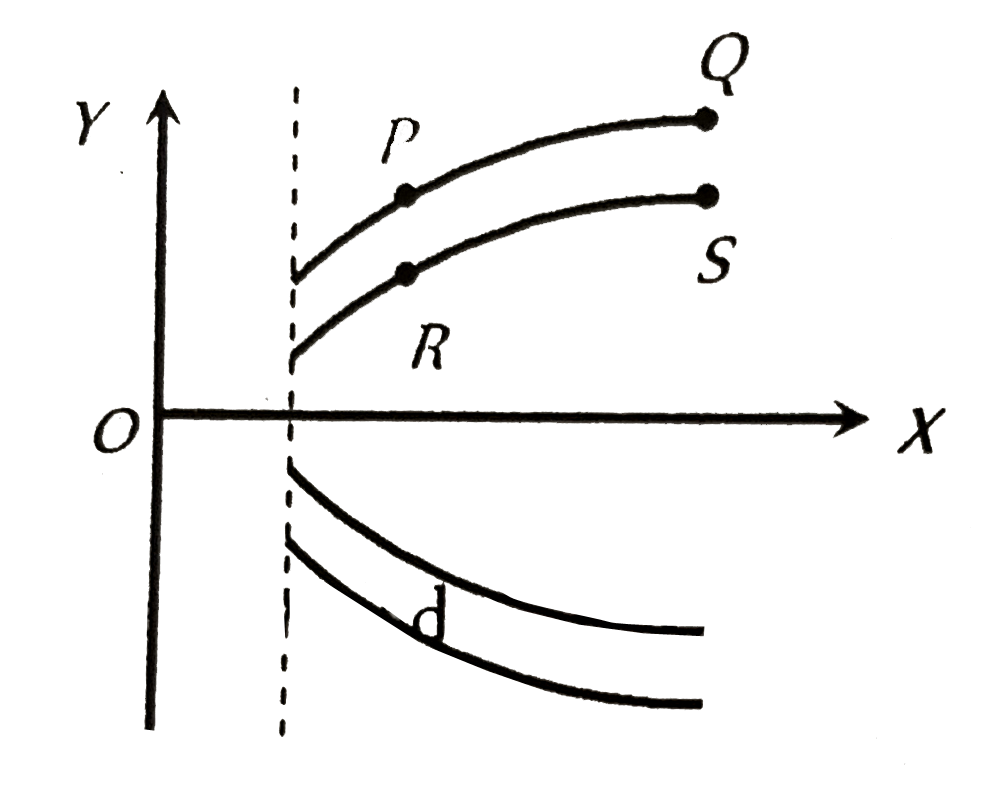In Thomson's experiment if the value of q/m is the same for all positive ions striking the photographic plate, then the trace would be
Straight line
Parabolic
Circular
Elliptical
The correct Answer is:B
Step by step video, text & image solution for In Thomson's experiment if the value of q/m is the same for all positive ions striking the photographic plate, then the trace would be by Physics experts to help you in doubts & scoring excellent marks in Class 12 exams.
Updated on:21/07/2023Topper's Solved these Questions
- ELECTRON, PHOTON, PHOTOELECTRIC EFFECT AND X-RAYSBOOK - ERRORLESS CHAPTER - ELECTRON, PHOTON, PHOTOELECTRIC EFFECT AND X-RAYSEXERCISE - Cathode Rays and Positive Rays
11 Videos
- ELECTRON, PHOTON, PHOTOELECTRIC EFFECT AND X-RAYSBOOK - ERRORLESS CHAPTER - ELECTRON, PHOTON, PHOTOELECTRIC EFFECT AND X-RAYSEXERCISE - Photon and Photoelectric Effect
4 Videos
- ELECTRO MAGNETIC INDUCTIONBOOK - ERRORLESS CHAPTER - ELECTRO MAGNETIC INDUCTIONEXERCISE - SET
20 Videos
- ELECTRONICSBOOK - ERRORLESS CHAPTER - ELECTRONICSEXERCISE - Selv Evaluation Test
23 Videos
Similar Questions
A beam of singly ionized atoms of carbon (each charge +e) all have the same speed enters a mass spectrometer, as shown in Fig. The ions strike the photographic plate in two different locations 5 cm apart. The .12C6 isotope traces a path of smaller radius, 15.0cm. What is the atomic mass number of other isotope ?
 .
.
View SolutionIn Thomson's experiment for determining e/m the potential different between the cathod and the anod (in accelerating coloumns ) is same as that between the deflecting plates (in the regions of crossed field ) . If thep.d is doubled , by what factor should the magnetic field be increased to ensure that the electron beam remains undeflected
View Solution
Knowledge Check
All the particles thrown with same initial velocity would strike the ground.
 .Awith same speed.BsimultaneouslyCtime would be least for the particle thrown with velocity v downward i.e., particle 1.Dtime would be maximum for the particle 2.
.Awith same speed.BsimultaneouslyCtime would be least for the particle thrown with velocity v downward i.e., particle 1.Dtime would be maximum for the particle 2.In J.J. Thomson's experiment a potential difference of 600 V is applied and deflection of spot is obtained on fluorescent screen . The spot was brought to its original position by applying uniform magnetic induction . The velocity of the beam of electron was found to be 4×107 m/s . The value of magnetic induction if distance between the plates is 0.3 cm is
A7×103TB5×103 TC7×10−3TD5×10−3 TIn Thomson spectrograph experiment, four positive ions P,Q,R and S are situated on Y-X curve a shown in the figure
 AThe specific charge of R and S are sameBThe masses of P and S are sameCThe specific charges of Q and R are sameDThe velocities of R and S are same
AThe specific charge of R and S are sameBThe masses of P and S are sameCThe specific charges of Q and R are sameDThe velocities of R and S are same
An opaque ball of diameter D=40mm is placed between a source of light with wavelength λ=0.55μm and a photographic plate. The distance between the source and the ball is equal to a=12m and that between the ball and the photographic plate is equal to b=18m. find:
(a) the image dimension y' on the plate if the transverse dimension of the source is y=6.0mm,
(b) the minimum height of irregularities, covering the surface of the ball at random, at which the ball obstructs light.
Note: As calculations and experience shown, that happens when the height of irregularities is comparable with the width of the Fresnel zone along which the edge of an opaque screen passes.
View SolutionIn Thomson experiment of finding e/m for electrons beam of electrons is replaced by that of muons (particle with same charge as of electrons but mass 208 times that of electrons) no deflection condition in this case satisfied if
View SolutionIn Thomson experiment of finding e/m for electrons beam of electrons is replaced by that of muons (particle with same charge as of electrons but mass 208 times that of electrons) no deflection condition in this case satisfied if
View SolutionIn Thomson experiment of finding e/m for electrons, been of electron is replaced by that of muons (particle with same charges as of electrons but mass 208 times that of electrons). No deflection condition in this case satisfied if
View SolutionThree particles having charges in the ratio of 2:3:5, produce the same point on the photographic film in Thomson's experiment. Their masses are in the ratio of
View Solution
